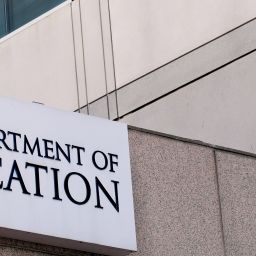
How President Trump’s Executive Order, “Improving Oversight of Federal Grantmaking,” Reshapes the Federal Grants Landscape
On August 7, 2025, President Trump signed an executive order, “Improving Oversight of Federal Grantmaking,” that significantly changes how discretionary grants are reviewed, awarded, and terminated. The order mandates several new reforms, including directives to the Office of Management and Budget (OMB) and all federal agencies to reorganize their current grant processes, designate a political appointee to manage oversight, and ensure alignment with the Administration’s priorities.
What Are the Executive Order’s Primary Provisions?
The most significant change resulting from this order is that every federal agency must appoint a senior political appointee to review and approve new discretionary grant announcements before they are made public. Peer review panels, previously a staple of the scientific funding process, will continue to exist but only in an advisory capacity. The order places decision-making power firmly with the political appointee(s), who are instructed to exercise independent judgment and ensure grants align with the administration’s interests. Interagency collaboration is necessary to identify and eliminate any duplicative or overlapping grant opportunities, thereby reducing redundancies across federal programs. Until that senior appointee is in place, agencies are advised not to issue any new funding opportunity announcements without prior approval.
The order also creates strict boundaries on the types of research eligible for federal funding. Projects that are considered “ideologically driven,” explicitly addressing diversity, equity, and inclusion initiatives, are ineligible. In addition, agencies are directed to prioritize awarding applicants with lower indirect cost rates. The White House has further directed OMB to revise its guidance to limit funding towards administrative and facilities expenses, making funds aimed at programmatic work instead of overhead costs.
The order also creates new grant termination powers. Agencies will now be able to end discretionary grants “for convenience” if they no longer align with the President’s or the agency’s agenda, without any breach or violation on the grantee’s part. This clause is to be incorporated into all future funding announcements, and agencies are required to report on how frequently they use it. Additionally, tighter controls are being imposed on how grantees can access drawdown funds, requiring written pre-authorization and justification.
When evaluating discretionary grant applications, agencies are now directed to give preference to institutions with lower indirect cost rates. Additionally, agencies are encouraged to distribute grants across a broad range of recipients, rather than continuation awards that concentrate on repeat applicants.
For scientific research grant opportunities, the order instructs agencies to prioritize applicants that demonstrate a commitment to what is referred to as “Gold Standard Science.” According to the administration, this is intended to boost scientific research that focuses on measurable quality and integrity.
Lastly, federal agencies are directed to ensure that all funding opportunity announcements and related attachments are written in plain language, making it more accessible to applicants to navigate the application process.
What Comes Next for Grant Recipients?
This executive order could redefine the balance between scientific expertise and political priorities in federal grantmaking. It will require changes to the Federal Uniform Guidance under 2 CFR Part 200 and other grant application guidance to streamline requirements and require permission to terminate for convenience. McAllister & Quinn will be tracking developments as changes to the Uniform Guidance will require a period of public comment.
Grant recipients should take a proactive approach by reviewing their current practices, updating compliance procedures, and preparing for heightened oversight or possible revisions to existing agreements. Remaining informed and flexible will be essential for successfully navigating the shifting federal grants landscape.
The federal grants landscape is changing fast, and staying informed is essential. At McAllister & Quinn, we take a strategic, forward-looking approach that helps you stay competitive and position your institution for success. Our team combines deep policy expertise with real-time tracking of federal trends, funder priorities, and new legislative developments. We translate this intelligence into clear, actionable insights tailored to your goals, so you can anticipate opportunities, align with funder interests, and pursue the awards that matter most to your institution.
If you want to be prepared to act quickly and effectively in a changing landscape, schedule a consultation with us today.

Jamie Burns
Jamie provides strategic intelligence support to the firm’s university clients. In addition, she works to provide clients with analyses of federal sponsors and programs as well as insights about the landscape of university competitors and collaborators.

Alec Simantov
Alec Simantov serves as a Director for the firm's Research Universities Practice. In this role, Alec leverages his expertise on the Federal budget and Congressional appropriations to provide strategic oversight on policy and legislative developments.

Sophia Vomvoris
Sophia Vomvoris is a Senior Research Analyst in McAllister & Quinn's Nonprofit & Public Agencies Practice. In this role, she contributes to the practice’s government relations efforts, manages internal data and provides strategic analysis on policy and legislative developments.









